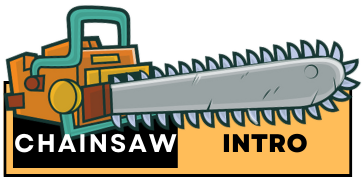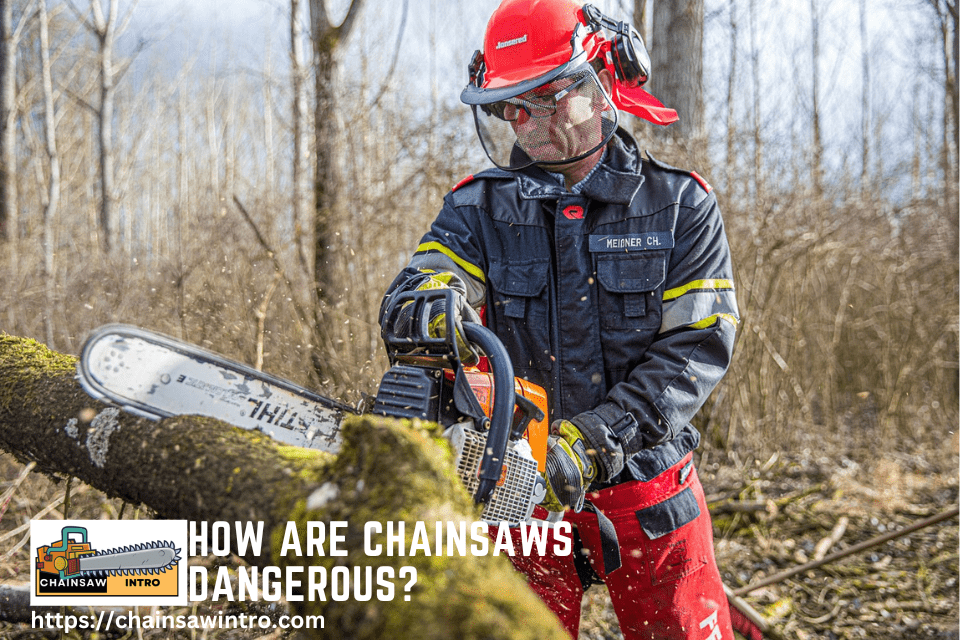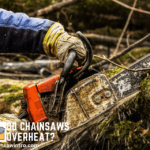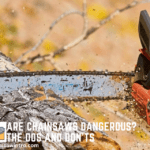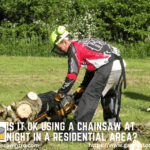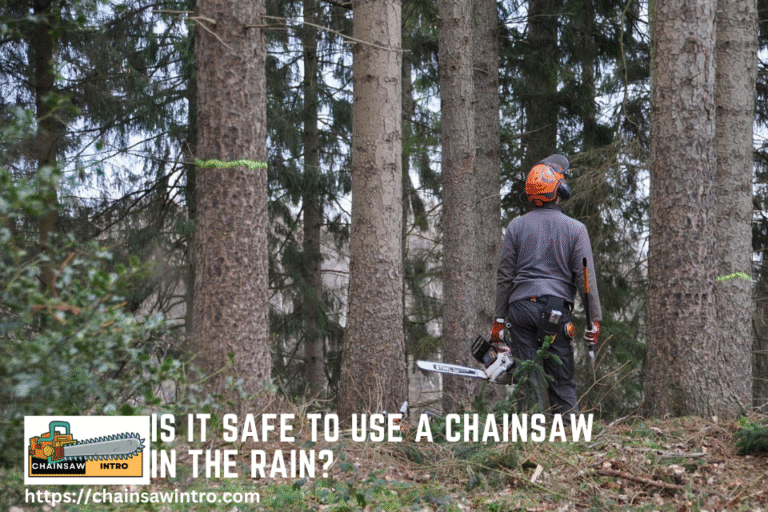Chainsaws are among the most powerful and efficient cutting tools ever invented, making them essential for forestry, construction, landscaping, and even simple home projects like cutting firewood. But with great power comes significant risk. Many people ask: How are chainsaws dangerous? The truth is, chainsaws can be extremely hazardous if misused or handled carelessly. Every year, thousands of accidents occur worldwide involving chainsaws, ranging from minor injuries to severe, life-threatening situations. Understanding the dangers of chainsaws and how to prevent accidents is the first step to using them safely.
The Primary Dangers of Chainsaws: What Makes Them Risky?
Chainsaws are inherently dangerous due to their high-speed cutting chains, which can rotate at 50-80 feet per second, capable of slicing through wood, flesh, and even bone in an instant.
Kickback Accidents – Kickback occurs when the tip of the chainsaw bar makes sudden contact with wood, forcing the saw back toward the operator. This is the leading cause of serious chainsaw injuries, often affecting the face, head, or upper body.
Severe Cuts and Lacerations – The sharp, high-speed chain can slice through skin, muscles, and even bone within seconds. Improper handling or loss of grip can result in devastating injuries.
Flying Debris – Chainsaws throw off wood chips, dust, and sometimes broken chain links, which can cause eye injuries or minor cuts if protective gear isn’t worn.
Noise-Induced Hearing Damage – Gas-powered chainsaws can produce noise levels above 100 decibels, which can damage hearing over time if ear protection isn’t used.
Vibration Hazards – Extended use of a chainsaw can lead to “hand-arm vibration syndrome” (HAVS), which causes numbness, tingling, and long-term circulation problems in the hands.
Fatigue and Loss of Control – Chainsaws are heavy tools. Using them for long periods can lead to fatigue, reducing reaction time and increasing the risk of accidents.
Environmental Risks – Working on unstable ground, cutting overhead branches, or operating in poor weather conditions can lead to falls or loss of balance, which often makes chainsaw injuries worse.
Why are chainsaws dangerous?
Why Chainsaws Are So Dangerous Compared to Other Tools
Unlike many power tools, chainsaws combine high cutting speed, weight, and sharp rotating parts in one device. Their ability to cut through thick wood also means they can cause devastating injuries in seconds. The danger is not just from the blade itself but also from the unpredictable movements of wood, falling branches, and unexpected kickbacks.
Mechanical and Environmental Hazards
Chainsaws can fail mechanically, increasing danger. A dull chain, common in poorly maintained used saws, forces users to apply more pressure, raising the likelihood of losing control. Faulty chain brakes or worn components, as highlighted in Reddit’s r/Chainsaw, can fail to stop the chain, leading to accidents. Gas-powered models introduce fuel-related risks, such as fires from improper storage or refueling near sparks, while battery chainsaws, though safer in this regard, can overheat or suffer battery malfunctions, per 2025 Consumer Reports.
Environmental factors amplify risks. Slippery or uneven terrain, common in outdoor settings, can cause slips, leading to loss of control. Cold or wet conditions reduce grip, and fatigue from prolonged use impairs judgment. Noise levels (100-110 dB for gas saws) can cause hearing loss without proper protection, and dust or debris can obscure vision, increasing accident likelihood. These factors make chainsaws particularly hazardous without proper precautions.
Accident Statistics: The Real-World Impact
Chainsaw injuries are a significant concern, with the U.S. Consumer Product Safety Commission (CPSC) reporting approximately 30,000 chainsaw-related emergency room visits annually in recent years, a trend continuing into 2025. Lacerations account for over 60% of cases, with 20% involving the face or neck due to kickback. The CDC notes that 10-15% of injuries require hospitalization, often for amputations or reconstructive surgery. Professionals face higher risks, but homeowners using chainsaws infrequently are also vulnerable due to inexperience, per a 2025 study in the Journal of Safety Research. Fatalities, though rare (under 100 per year in the U.S.), often stem from tree-felling accidents or severe blood loss from cuts.
Key Safety Features in Modern Chainsaws
Modern chainsaws incorporate features to mitigate dangers, and understanding them is crucial. Chain brakes, standard on models like the Stihl MS 271 and Ego CS2005, stop the chain instantly if kickback occurs, reducing injury risk. Low-kickback chains, required by ANSI B175.1 standards, minimize the force of kickback, as seen in Oregon’s CS1500. Anti-vibration systems, found in Husqvarna’s 455 Rancher, reduce fatigue and improve control. Throttle locks prevent accidental startups, and ergonomic handles enhance grip, per 2025 reviews from Popular Mechanics. Battery-powered models, like the Makita XCU04, eliminate fuel risks and operate quieter (70-80 dB), improving situational awareness. Always verify these features are functional, especially on used saws, to ensure safety.
Practical Safety Tips to Minimize Chainsaw Risks
To safely operate a chainsaw, follow these expert-backed tips compiled from OSHA, CDC, and user forums like FireAndSaw.com:
- Wear Proper PPE: Use chainsaw chaps (cut-resistant), safety glasses, a helmet with a face shield, gloves, and hearing protection. Steel-toe boots with non-slip soles prevent foot injuries.
- Inspect the Saw: Before each use, check the chain tension, sharpness, and brake functionality. Ensure the oil reservoir is filled and the bar is free of damage.
- Avoid Kickback: Use low-kickback chains, keep the chain sharp, and avoid cutting with the bar’s tip. Maintain a firm two-handed grip and never cut above shoulder height.
- Plan Your Work: For tree felling, assess the tree’s lean and clear escape paths at 45-degree angles. Cut on stable ground to avoid slips.
- Maintain the Saw: Sharpen the chain regularly, clean air filters, and use the correct fuel mix for gas models. For battery saws, charge batteries fully and avoid overworking the motor.
- Take Breaks: Limit continuous use to 15-20 minutes to prevent fatigue and vibration-related injuries. Stay hydrated and alert.
- Train and Practice: If new to chainsaws, take a safety course or practice on small branches. YouTube tutorials and Stihl’s safety guides are great resources.
- Avoid Solo Work: Have a partner nearby for emergencies, especially during tree felling, to ensure quick response to accidents.
Special Considerations for Different Chainsaw Types
Gas-powered chainsaws, like the Echo CS-590, are powerful but noisy and require meticulous maintenance to prevent fuel leaks or engine issues. Battery chainsaws, such as the Ego CS2005, are safer for beginners due to their lighter weight and lack of fuel risks but can overheat during heavy use. Corded electric saws, like the Oregon CS1500, pose tripping hazards from cords, requiring careful cord management. Each type has unique risks, so tailor your safety approach accordingly.
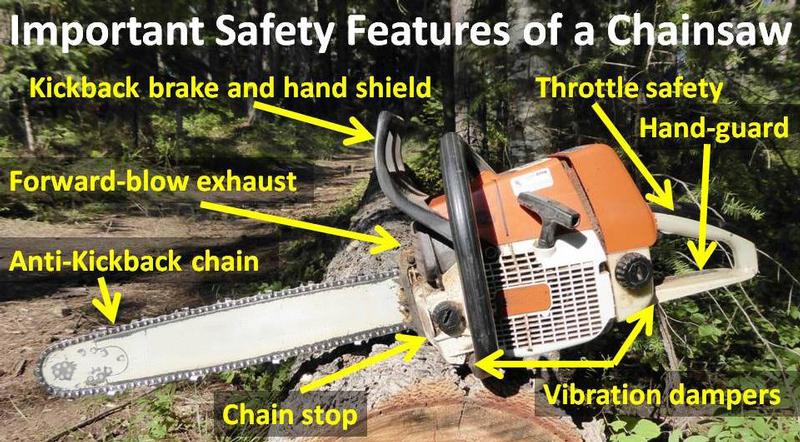
Who’s Most at Risk?
Inexperienced users, particularly homeowners using chainsaws sporadically, face higher risks due to lack of training, per 2025 ArboristSite threads. Professionals, while skilled, can become complacent, leading to accidents during repetitive tasks. Older or poorly maintained used chainsaws increase dangers due to worn brakes or dull chains, as highlighted in our previous article on buying used chainsaws. Regardless of experience, complacency and improper maintenance are universal risk factors.
How Common are Chainsaw Injuries?
Chainsaw injuries are not as common as one might think. In the United States, there are an estimated 11,000 chainsaw-related injuries each year. This number may seem high, but when compared to other types of injuries, it is actually quite low.
For example, there are approximately 500,000 ladder-related injuries each year in the US. One reason that chainsaw injuries are not more common is that they require a certain level of expertise to operate. Unlike power tools such as drills and saws, which can be used by almost anyone, chainsaws require training and experience to use safely.
Even with training, however, accidents can still happen. The most common type of chainsaw injury is a laceration. This occurs when the chain comes into contact with skin or flesh and cuts it open.
Lacerations can be extremely serious and even life-threatening if they occur in major arteries or organs. Chainsaw accidents can also result in amputations. This happens when the chain severs a limb from the body entirely.
Amputations typically occur when the operator loses control of the saw and it comes into contact with an arm or leg.
Conclusion
Chainsaws are undeniably dangerous, with risks like kickback, lacerations, and falling debris causing thousands of injuries yearly. However, with proper precautions—wearing PPE, using safety features, and following maintenance and operational guidelines—these risks can be significantly reduced. Modern chainsaws from brands like Stihl, Ego, and Oregon incorporate advanced safety features, making them safer than ever in 2025.
Whether you’re a DIYer or a professional, prioritize training, regular maintenance, and vigilance to ensure safe operation. By respecting the tool’s power and preparing thoroughly, you can harness the benefits of a chainsaw while minimizing its dangers. Stay sharp, stay safe, and cut with confidence!
Frequently Asked Questions About Chainsaw Dangers
What is the most common chainsaw injury?
The most common chainsaw injuries occur on the hands, legs, and face, often caused by kickback or loss of control. Kickback injuries are especially dangerous because the saw can swing back toward the operator at high speed. Wearing chainsaw chaps, gloves, and a helmet with a face shield significantly reduces the risk.
How can I make using a chainsaw safer?
You can make chainsaw use safer by following these steps:
- Wear proper protective gear (helmet, chaps, gloves, boots, and ear protection).
- Maintain your chainsaw regularly and ensure the chain is sharp and properly tensioned.
- Always use two hands and maintain a firm stance.
- Avoid cutting above shoulder height or in unstable positions.
- Stay aware of kickback zones and never cut with the tip of the bar.
Are chainsaws more dangerous than other power tools?
Yes, chainsaws are considered one of the most dangerous power tools because of their sharp, fast-moving chain and the risk of kickback. Unlike drills or saws, chainsaws can cause severe, life-threatening injuries within seconds if mishandled.
Can a beginner use a chainsaw safely?
Yes, beginners can use chainsaws safely if they start with proper training, wear protective equipment, and use smaller, lightweight models designed for home use. Beginners should avoid large felling jobs until they gain more experience.
How loud are chainsaws, and can they damage hearing?
Gas-powered chainsaws typically operate at 100–120 decibels, which is loud enough to cause permanent hearing damage with prolonged exposure. Always wear ear protection such as earmuffs or earplugs when operating a chainsaw.
Why is chainsaw kickback so dangerous?
Kickback is dangerous because it happens suddenly and forcefully, often catching the operator off guard. When the tip of the chainsaw bar strikes wood, the saw can jerk back toward the face or chest, causing severe or fatal injuries. Kickback is the leading cause of chainsaw-related accidents.
Who is most at risk of chainsaw accidents?
Chainsaw accidents are most common among inexperienced users, homeowners doing DIY tree work, and fatigued workers. Professionals can also be at risk if they skip safety steps, use dull chains, or work in hazardous conditions like bad weather or unstable terrain.
Can a Chainsaw Cut Through Human Bone?
Yes, a chainsaw can cut through human bone. However, it is not recommended as it can cause serious injury or even death. When cutting through bone, the chain can easily become stuck and the person operating the chainsaw could lose control.
In addition, the saw can kick back when it hits something hard, like bone, which could result in serious injury or even death.
What are the OSHA Requirements for Chainsaw Training & Safety?
To meet federal standards, OSHA requires all employers to train their employees on how to properly operate a chainsaw safely allowing them near the equipment unless they’ve completed training first In addition, all employees must receive refresher courses every year thereafter for ensure up-to-date knowledge about new technologies related to this industry. well as techniques used by experienced professionals who know what they’re doing best! The aim here isn’t just employee but personal; after completing each session you’ll walk away knowing exactly how not increase unnecessary risks and accidents your levels across and efficiently! avoiding costly errors altogether!! !
To sum up, OSHA requires all employers to train their employees on how to properly operate a chainsaw safely allowing them near the equipment unless they’ve completed training first.
I’ve spent the past 10+ years working with chainsaws in forestry, landscaping, and firewood preparation. Along the way, I’ve gained certifications in chainsaw operation and safety and built extensive experience with trusted brands like Stihl, Husqvarna, and Oregon. I enjoy sharing my knowledge through step-by-step guides, tool reviews, and safety advice so others can get the most from their chainsaws while staying safe on every job.
